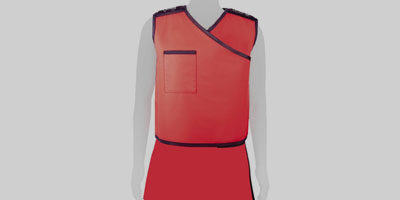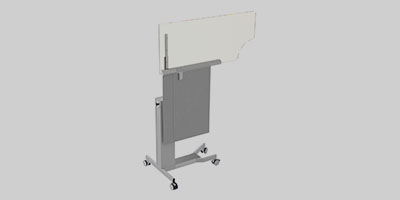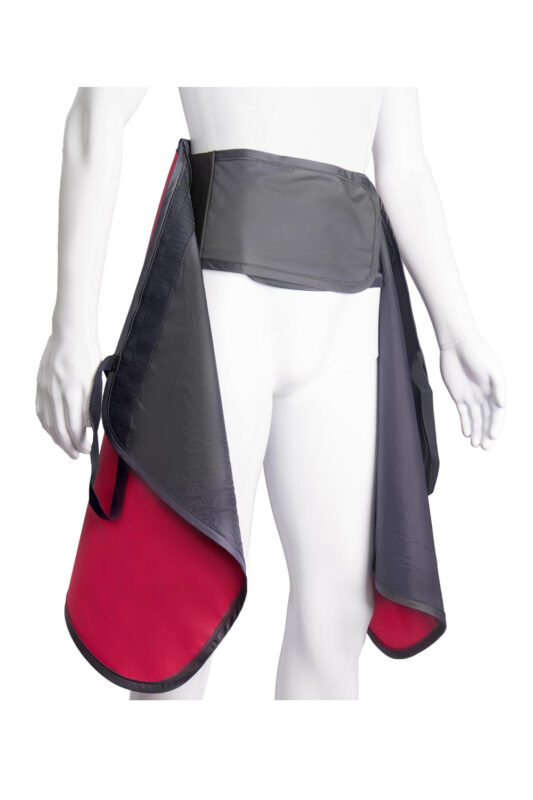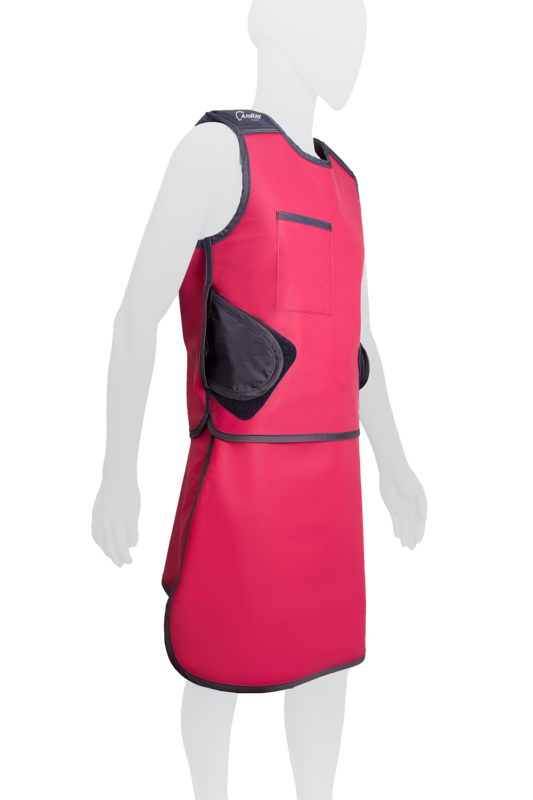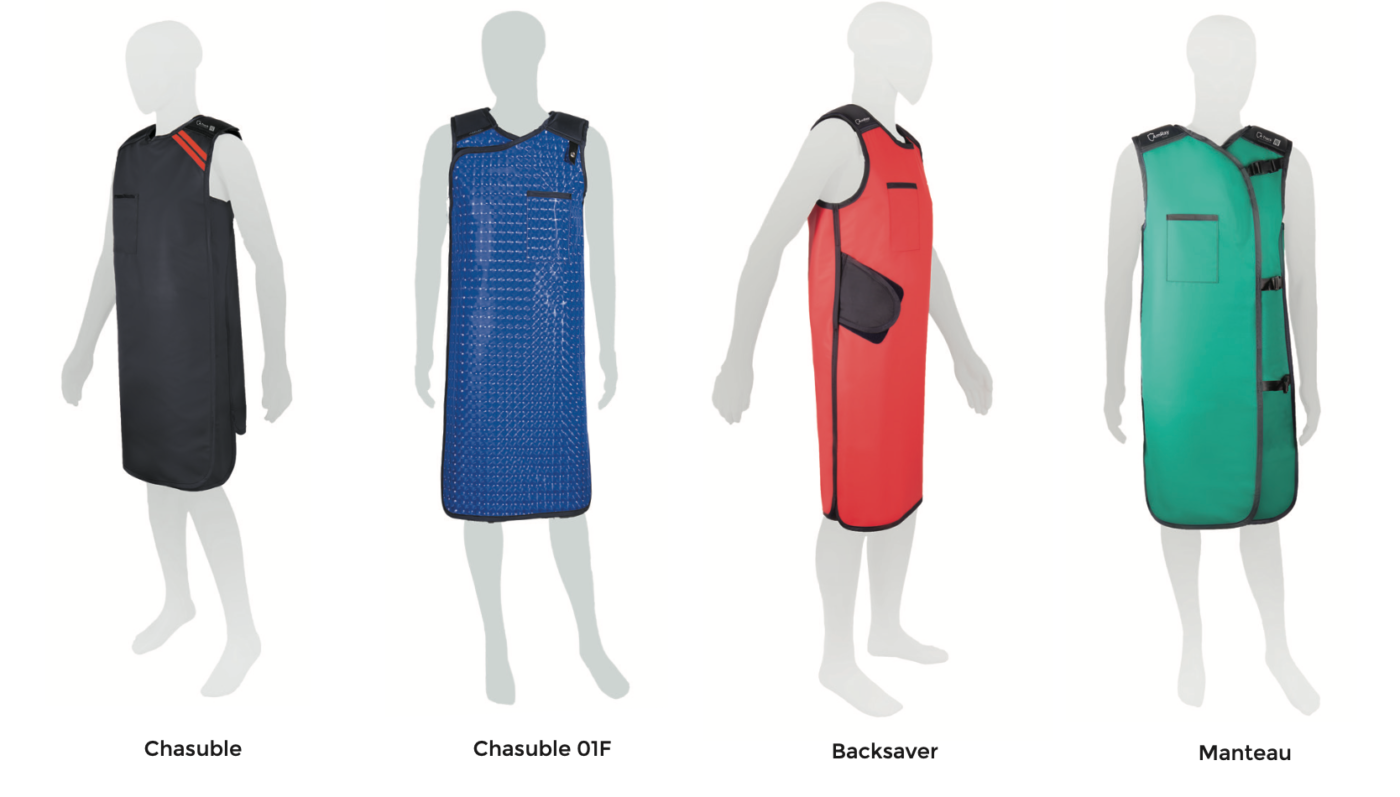Tailles et Mensurations Pour Les Tabliers Plombés
Notre tableau des tailles correspond à nos tailles les plus populaires. Si vous avez besoin d’aide pour choisir la bonne taille, veuillez vous référer aux instructions de mesure sous le tableau des tailles.
Si vos mesures individuelles ne correspondent pas aux tailles standard indiquées ci-dessous, veuillez contacter les représentants commerciaux d’AmRay par email à info@amraygroup.com. L’équipe dédiée vous aidera à choisir la taille la plus adaptée pour votre tablier de protection contre les radiations.
Tableaux des Tailles pour Vestes
1. Comment prendre les mesures pour la veste appropriée?
Pour mesurer le tour de poitrine, prenez le mètre ruban et faites le tour du dos, puis ramenez le vers l’avant en couvrant la partie la plus large du buste. Veillez à ce que le mètre ruban soit parallèle au sol, puis notez l’endroit où les deux extrémités du ruban se rencontrent.
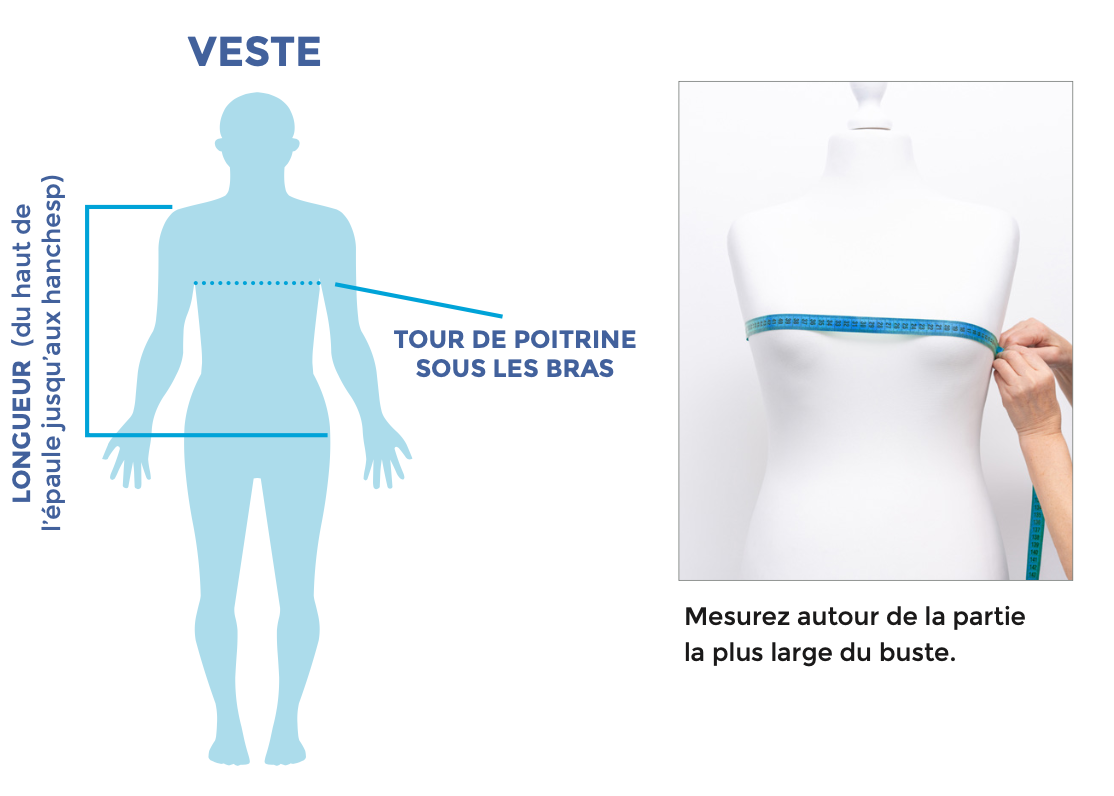

2. Quel style dois-je choisir ?
Lors du choix d’une veste, en plus de prendre en considération
le modèle choisi et de son adéquation à l’utilisateur, vous
devez prêter attention au tour de poitrine et au tour de taille.
En général, nous recommandons de choisir un vêtement bien
ajusté, pour une protection maximale. Le tableau indique le tour
de poitrine réel des vêtements (avec une marge supplémentaire).
Toutes nos vestes ont les mêmes dimensions, mais il faut aussi
tenir compte du modèle, et choisir celui qui est le plus adapté à
la morphologie de l’utilisateur.
Par exemple, notre Veste 49 a une coupe étroite, tandis que
notre Veste 48 a une coupe plus ample.
En général, lorsqu’il y a un chevauchement au niveau du pan
frontal, l’utilisateur aura plus de marge pour ajuster la veste à
son goût. Sur les vestes sans chevauchement (Veste 49, Veste
46, Veste 45), il est très important de prendre les mensurations
correctement pour éviter un problème de taille.
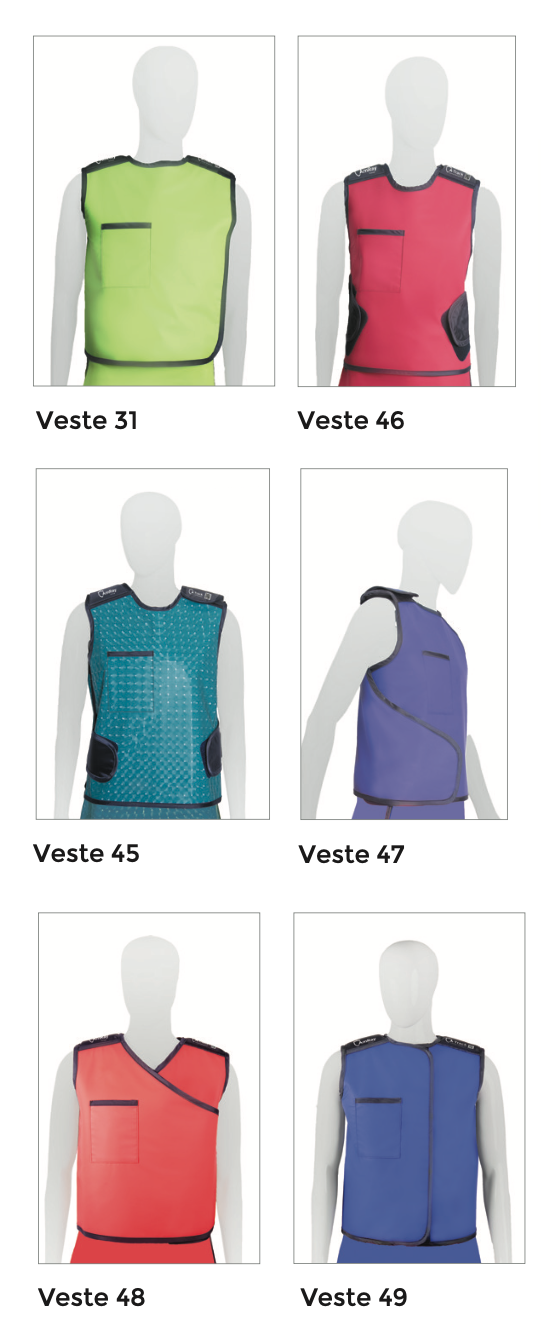
Tableaux des Tailles pour Jupes
1. Comment prendre les mensurations ?
Lorsque vous prenez vos mensurations, veillez à vous tenir droit, les
jambes légèrement écartées et à porter des chaussures plates.
nclinez-vous légèrement sur le côté. L’endroit où votre corps se courbe
correspond à la ligne naturelle de votre taille. Pour prendre le tour de
taille, enroulez le ruban autour de la taille en partant du dos vers l’avant,
puis notez l’endroit où les deux extrémités du ruban se rencontrent.
Cette mesure doit être prise au point le plus étroit du torse.
Pour mesurer le tour de hanches, placez le ruban autour de la partie la plus large de votre bassin (généralement 20 cm sous la taille).
Lors de la prise de mensurations, assurez-vous que votre mètre
ruban reste droit autour du corps et bien parallèle au sol.


2. Conseils pour choisir la bonne taille
Lorsque vous choisissez une jupe, en plus de prendre en considération le modèle choisi et son adéquation à l’utilisateur, vous devez prêter attention au tour de taille et de hanches.
Nos jupes sont taille haute. C’est la raison pour laquelle il est important de prendre le tour de taille au bon endroit, car une différence de quelques centimètres peut faire basculer l’utilisateur dans une taille supérieure, qui ne lui conviendrait pas. N’oubliez pas non plus que nos jupes ont un recouvrement de 35cm, il ne s’agit pas d’une protection frontale complète.
En général, nous vous recommandons de choisir une taille plus étroite (plus petite que votre taille réelle), à moins que le tour de hanches ne vous permette pas de choisir la taille inférieure.
Tableaux des Tailles pour Chasubles
1. Comment prendre les mensurations?
Pour mesurer le tour de poitrine, prenez le mètre ruban et faites le tour du dos, puis ramenez le vers l’avant en couvrant la partie la plus large du buste. Veillez à ce que le mètre ruban soit parallèle au sol, puis notez l’endroit où les deux extrémités du ruban se rencontrent.
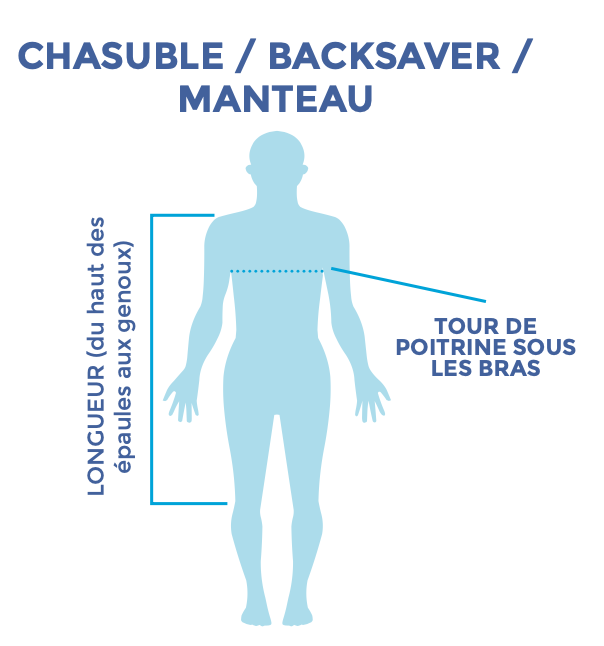



2.Quel modèle dois-je choisir ?
Les modèles Chasuble, Chasuble 01F,Backsaver et Manteau sont des tabliers à coupe droite. Lorsque vous choisissez l’un de ces modèles, vous devez prendre en considération les mensurations de la taille et des hanches, car une taille plus grande pourrait empêcher le tablier de se fermer correctement.
[row_inner_3] [col_inner_3 span__sm= »12″]

Tableaux des Tailles pour Tabliers Face Avants
Comment prendre des mensurations ?
Les mensurations doivent être prises de la même manière que pour les tabliers, cependant ces modèles sont fabriqués en fonction de leur largeur. Vous pouvez voir dans les tableaux ci-dessous qu’il y a moins d’options de tailles, mais celles-ci couvrent un plus large éventail de tours de poitrine. Cela permet une plus grande flexibilité lors du choix de la taille.
Notre Veste 44 et notre Tablier à Pans ne sont pas des vêtements cintrés et peuvent donc convenir aux utilisateurs aux morphologies plus atypiques, car ils s’ouvrent des deux côtés et permettent ainsi un meilleur ajustement.
[/col_inner_3] [/row_inner_3]2. Tableaux des Tailles pour Tablier à Pans

3. Tableaux des Tailles pour Veste 44
QUE DOIS-JE SAVOIR D’AUTRE ?
Vous devez également tenir compte de la disproportion des corps. Très peu de personnes sont exactement proportionnelles à la “norme”, mais la plupart des personnes se situent dans une fourchette tolérable. Cependant, vous devez tenir compte de tout ce qui peut être « hors-normes » (épaules larges, taille ou poitrine opulente, etc…).
Si vous rencontrez des difficultés pour prendre vos mensurations, vous pouvez nous les communiquer et nous vous conseillerons les modèles et tailles les plus adaptés. Nous ne voyons pas les utilisateurs, donc notre suggestion sera basée sur l’hypothèse que les mensurations transmises ont été prises correctement.
Veuillez contacter AmRay si vous avez des doutes concernant une taille if you require skins or if you have any doubts regarding a size.

 English
English
